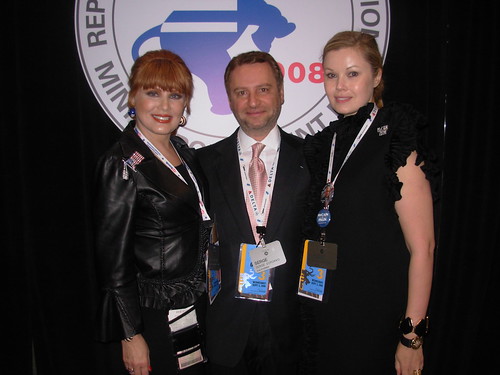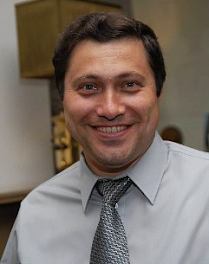The owner of RTVi is Vla
 dimir Gusinsky, former Russian oligarch and former leader of the Russian-Jewish Congress. A vocal critic of the Putin regime, he barely escaped imprisonment and managed to emigrate to Israel, where he lives today. Gusinsky also owns the Israeli daily Hebrew language paper, "Ma'ariv", and the popular soccer club there. His TV station has studios in New York, Jerusalem, Berlin and New York. RTVI local programming include news by-the-hour, some entertainment & sports, and several other shows. The most popular journalist at RTVi is Victor Topaller, a talented right-wing journalist, and a controversial host on his weekly TV show.
dimir Gusinsky, former Russian oligarch and former leader of the Russian-Jewish Congress. A vocal critic of the Putin regime, he barely escaped imprisonment and managed to emigrate to Israel, where he lives today. Gusinsky also owns the Israeli daily Hebrew language paper, "Ma'ariv", and the popular soccer club there. His TV station has studios in New York, Jerusalem, Berlin and New York. RTVI local programming include news by-the-hour, some entertainment & sports, and several other shows. The most popular journalist at RTVi is Victor Topaller, a talented right-wing journalist, and a controversial host on his weekly TV show.RTN is owned by the
 Reform Rabbi Mark Golub from Connecticut, who is also a talented drama producer, and host of the Jewish radio program, "Le'chaim". RTN rebroadcasts several news & entertainment programs from Russia, Ukraine, and Israel, but it is mostly famous for its local productions. RTN employs about fifty journalists and other staff. RTN reporters and TV hosts are well known Russian-speaking immigrants who live in New York, New Jersey, and Connecticut.
Reform Rabbi Mark Golub from Connecticut, who is also a talented drama producer, and host of the Jewish radio program, "Le'chaim". RTN rebroadcasts several news & entertainment programs from Russia, Ukraine, and Israel, but it is mostly famous for its local productions. RTN employs about fifty journalists and other staff. RTN reporters and TV hosts are well known Russian-speaking immigrants who live in New York, New Jersey, and Connecticut.Channel I (
 ORT) is the propaganda from Moscow. The quality of its programming is superb. They have reporters all over the world, the best studios and equipment, and high quality audio & picture. It offers a huge variety of entertainment programs, movies, news and talk shows. But the content of its news is obviously anti-American, anti-Israel, and anti-Western.
ORT) is the propaganda from Moscow. The quality of its programming is superb. They have reporters all over the world, the best studios and equipment, and high quality audio & picture. It offers a huge variety of entertainment programs, movies, news and talk shows. But the content of its news is obviously anti-American, anti-Israel, and anti-Western.NTV America is also owned by the Russian government, specifically by GASPROM (the government-controlled gas monopoly). That is w
 hy its news programs often depict America as a collapsing empire, with a weakening dollar and with a lack of morals. Sometimes, NTV America and ORT describe the world events in similar terms and even show similar footage.
hy its news programs often depict America as a collapsing empire, with a weakening dollar and with a lack of morals. Sometimes, NTV America and ORT describe the world events in similar terms and even show similar footage.You can imagine that the budget of the Russian Federation is definitely bigger than the wealth of Rabbi Golub and Vladimir Gusinsky. So, RTN and RTVi are competing in a very tough environment, against the Kremlin propaganda machine. In my opinion, this is not a fair fight. I'm a strong believer in the local programming - with immigrants as TV hosts, guests, and producers. I understand that the quality of Moscow-based shows is significantly higher than the quality of shows produced in the small studios of ethnic TV stations in the US, but Kremlin doesn't care about our life here. Moscow wants to create the so-called, "Russian Diaspora", loyal to Russia. Kremlin needs it for business investments from the US, for political purpose (lobbying Russian interests in Washington), and for other goals that have nothing to do with American interests.
I hope that RTN and RTVi will stay in business despite the competitive pressure from Moscow. We are not Russian compatriots abroad, we are Russian-speaking Americans, who love this country with all of its problems and successes.














